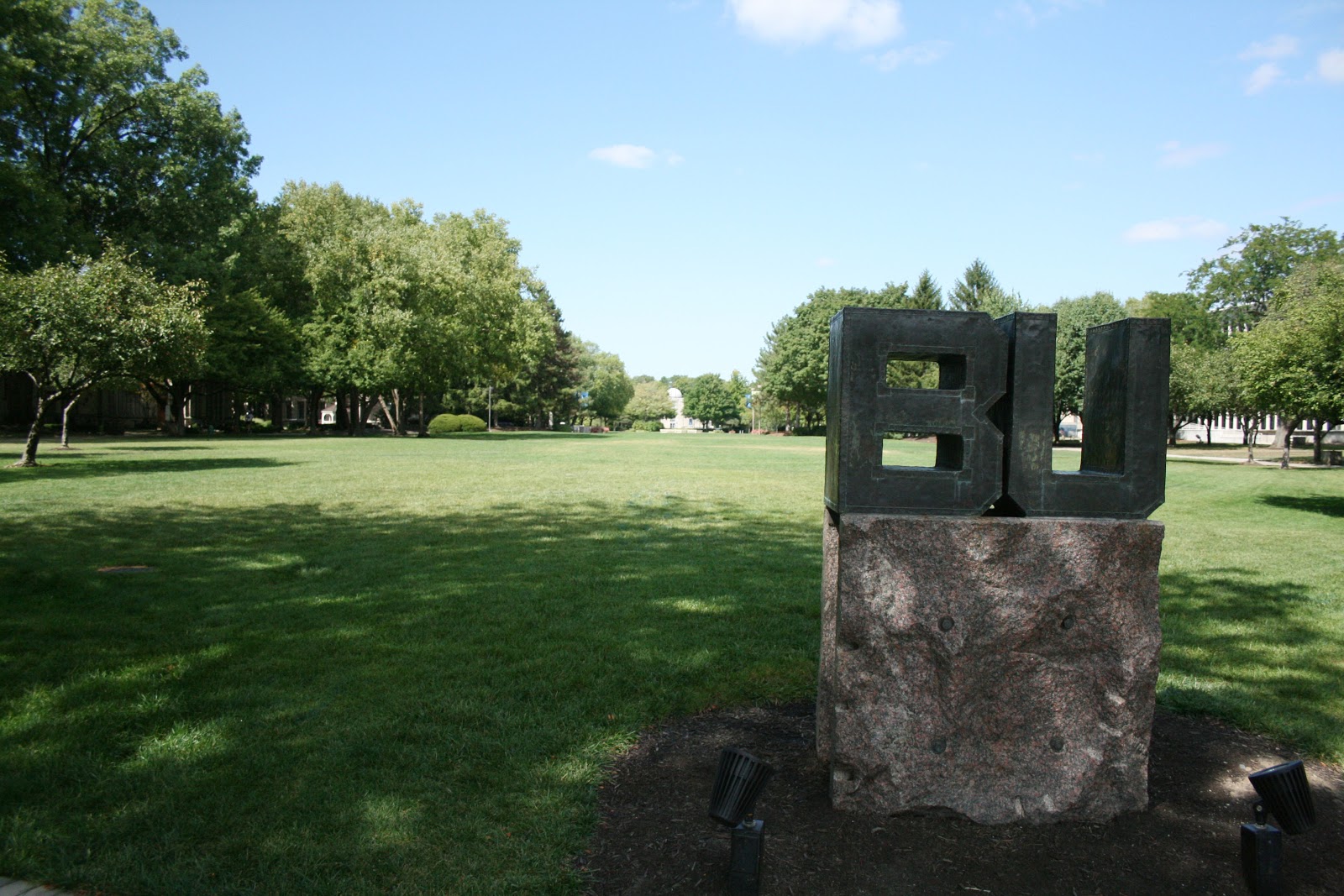The mall at Butler University is one place available for outdoor studying. Image is from the Collegian’s File Photos.
KIRAN BRAR | OPINION COLUMNIST | kbrar@butler.edu
COVID-19 has raised many concerns for students at Butler. While we all anticipated the mask wearing and the lack of social interactions, there is one issue that perhaps didn’t cross most of our minds when we came back to campus.
Where will we actually go to do our schoolwork?
Right now, Butler has a few outdoor study spaces by Starbucks, Jordan Hall and Fairview. Indoor areas like Irwin Library, Starbucks and the academic buildings are open for student use, but the capacity restrictions make it nearly impossible for students to find a place to study. Simply put, the current accommodations for student study spaces are not enough to meet our needs of safety as we continue our studies.
While Butler has converted traditional indoor study spots into socially distant ones, they have neglected to look into the safer option: outdoor study spaces. If you walked onto campus today, you might see students hunching over benches to type on laptops, attempting to take notes in hammocks and or making mad dashes to any open tables outside Starbucks.
According to the CDC, activities are generally safer if they are held in outdoor spaces because of the increased air flow. With active COVID-19 cases on campus, students may be wary of being out in the public in general — let alone holed up in Irwin or Starbucks. As college students, we must prioritize our personal health and safety, and that includes where we decide to do our schoolwork. Grace Calabria, a junior middle secondary education and English double major, is one of those cautious students.
“I haven’t felt super comfortable with fully integrating back into campus,” Calabria said. “I actually didn’t choose to go in for my hybrid class this week, I stayed online both days to ease into it.”
Students like Calabria may feel restricted to stay in their rooms to study and join Zoom classes online because they want to help keep the COVID-19 cases down. While this might be a safe decision, it is not very healthy — physically nor mentally. College students already experience a fair share of stress, and COVID-19 is not making it any easier.
“My whole day revolves around this very small room,” Calabria said. “It feels like I’m a little bit disoriented from being in here all day. It’s definitely necessary to get outside, get some fresh air, get some exercise or do something to just be out in nature for a little bit. It’s a very positive change from all the technology time that we are forced into.”
Additional outdoor study spaces would be incredibly beneficial for students, not only for the advantages of getting some sun and a better outlook, but also for their safety. And right now, that is one of the most important things to consider as a college student amidst a pandemic.
In addition to the psychological and emotional benefits of studying outside, it is also a practical necessity for students. Many students also have to consider their roommates’ class times when joining a class online. It is difficult to participate in an online class over Zoom when it comes to early classes or having the same class times as a roommate. Calabria had problems with this when Butler implemented a shelter-in-place protocol for the first two weeks of classes.
“In order to find a quiet space where I could be comfortable and fully participate in my classes, I went to my car,” Calabria said.
From conversations I’ve had with other students, I know that Calabria is not the only student joining class from her driver’s seat. The fact that Butler has not prepared enough for students to have places to participate in class or study demonstrates their severe lack of preparation for the semester. No student can adequately learn from their car, nor should they have to make that decision — especially at the supposed No. 1 university in the Midwest.
Butler may be small, but there are areas where outdoor study spaces could be constructed for student use without breaking social distancing protocols and obstructing general walking traffic. One recommendation could be to add tables on the grassy area in between Starbucks and Jordan Hall. This area sits empty while people pile onto the tables in the area just outside of the Starbucks entrance. Why not simply create more?
Along those same lines, a second recommendation could be to add tables around and in front of the benches on campus. This quick fix would allow students to do their work on benches without their backs aching or necks straining. Plus, they wouldn’t have to balance everything on their laps while simultaneously Zooming, taking notes and reading a ten-pound textbook. Butler could also take a similar approach to Purdue University and University of Tennessee Knoxville and implement outdoor study spaces in the form of canopy tents and hammocks.
While it is understandable that Butler might want their students to study and join class from their rooms for safety reasons, it is not reasonable to expect a student to always stay in their room to study — especially when most are not as productive in the same space as their bed. The safest, most effective solution would be to make accommodations for students to have more options when studying outside.
Arrangements for outdoor study spaces are crucial for students during this time. As a school that prides itself on a “Community of care,” Butler needs to take action to help the students continue the semester in a safe, accommodating environment so we aren’t having to resort to uncomfortable spaces for schoolwork. It is only September, so we have time to flatten the COVID-19 curve on campus by staying socially distanced outside before winter kicks in.



